Blog Archives
Regular Season Win Over/Under Totals Updated For MLB 2016 Wagering + Best Bets

I think the Mets have a chance to win in the mid 90’s for wins, which is way less than the 89.5 over/under total they are listed for. They will beat up on the Braves, Phillies and I also believe they will truck the Marlins too. I like the Nationals a few wins behind them. New York should also have a good look at returning to the World Series this fall with that pitching staff.
Hunter Stokes (MLB Reports Part Owner + Chief Writer) Follow @stokes_hunter21
Follow The MLB Reports On Twitter Follow @mlbreports
I am continuing the theme of wagering on the Baltimore Orioles. They were my favorite American League club growing up. Now I favor no one but the clubs I can win money on. Perhaps this season I will rekindle my fondness again for the Birds.
This set of odds represents the best set of over/under win total odds I have seen for any establishment thus far.
These are better than PECOTA, FanGraphs and most Las Vegas odds.
The best bet on the board has to be the KC Royals over 84.5 At least these guys give them a projected winning season, but how can KC be a +1200 World Series favorite, to the Indians +2200 mark, meanwhile the Indians listed as an over/under of 84.5.
I am not even questioning the ‘Tribe’s” win total here. This is a nice reflection of what they should have in their victory pile for the upcoming campaign.
Out of a lot of things that don’t make sense, I point this out. Read the rest of this entry
Don’t Believe Everything You Read: A Response to The New Normal For the New York Yankees- Part II
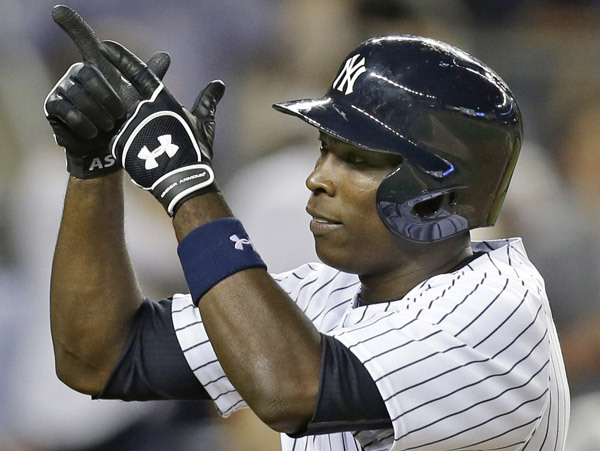
Alfonso Soriano came back to New York – and thrashed on the competition, with 17 HRs and 50 RBI – in just 58 games with the Bronx Bombers. He also snuck in 18 SB for the campaign, but nobody even noticed. Still the experts have failed to recognize that the offense was significantly better once this man entered the fray. Even with his 38 year old season coming up, it is entirely possible he could club another 25 – 30 HRs and approach 85 – 95 RBI out of the DH slot. Along with McCann, Beltran, Ellsbury, a potentially full year of Teixeira and Jeter, this lineup is a hell of a lot different from the team that limped to a 85 – 77 mark for the 2013 year.
By Nicholas Rossoletti (Yankees Correspondent/Trade Correspondent): Follow @nross56
Follow MLB Reports On Twitter Follow @mlbreports
As with the first part of this piece, this article is in response to a piece written for Grantland by Rany Jazayerli (which can be found here) that paints a fairly negative picture of the near-future for the New York Yankees.
Once again, I would encourage everyone to visit Grantland.com as it is a one stop shop for some of the best internet based writers on the planet.
Again, a quick thank you to Fangraphs.com and Baseball-reference.com.
Those organizations are a huge reason for the increased understanding and intelligent discussion relating to baseball over the last decade, and they are used throughout as resources for all advanced statistics.
If you aren’t reading the content on those sites, I would strongly suggest you do.
We will start with our Point/Counter-Point structure with a discussion of the new Yankee line-up, and more so, the effect of the departure of Robinson Cano on that lineup.
For Part 1 Of Don’t Believe Everything You Read: A Response to The New Normal click here.
Alfonso 2013 Highlights as a Cub and a Yankee – Mature Lyrics so Parental Guidance Is Advised
Don’t Believe Everything You Read: A Response to The New Normal For the New York Yankees- Part I
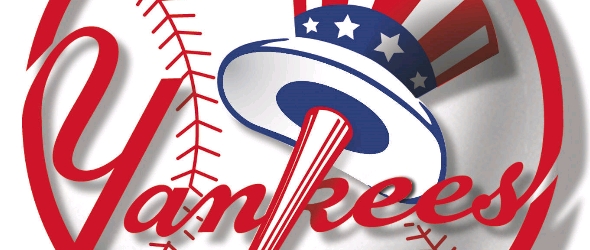
Opinions have varied wildly about the effect on the wholesale changes to the New York Yankees roster. This piece is in response to in response to a piece written for Grantland by Rany Jazayerli (which can be found here lower in a link icon in the 1st couple of lines.) As the Yankees Correspondent for the MLB Reports, I felt I needed to address the merits of the topic in question, make some counterparts, in order to move the dialogue from a slightly different perspective.
By Nicholas Rossoletti (Yankees Correspondent/Trade Correspondent): Follow @nross56
Follow MLB Reports On Twitter Follow @mlbreports
Before we get started, I wanted to give credit where credit is absolutely due.
This piece is in response to a piece written for Grantland by Rany Jazayerli (which can be found here) that paints a fairly negative picture of the near-future for the New York Yankees.
If you haven’t been to Grantland.com for sports and entertainment news and opinions, you are missing out. Some of the best work in the business.
All advanced statistics (and other statistics) are courtesy of our friends at Fangraphs.com and Baseball-reference.com.
As always, we appreciate those sites making the information available to be able to debate the game we love. For ease to the reader, the response has been broken into two parts. This is part one of the response.
Part 2 of the Don’t Believe Everything You Read: A Response to The New Normal For the New York Yankees click here
New York Yankees 2013 Year Highlights – With Full Credit Going To The YES Network
NL: MVP Rankings: Race Remains Close In Late June
Like us on Facebook here
Follow @mlbreportsWednesday, June.19/2013
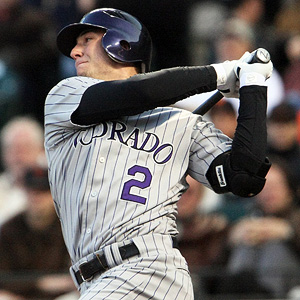
Troy Tulowitzki just broke his ribs – and cant ever seem to keep healthy. He is hitting .347/.413/1.048 with 16 HRs and 51 RBI out of the Shortstop position. (MVP like numbers for sure). The Rockies are startling to lose without him in the lineup – just like last season, when they dropped 93 games with Tulo only playing in 47 Games.
Jake Dal Porto (MLB Reports Writer) Follow @TheJakeMan24
The regular season has finally reached the point where the “it’s early,” or “it’s too small of a sample size” excuses are no longer accurate. Most of the regulars are closing in on 300 plate appearances.
The race in the NL is extremely close, and it will become close now that Troy Tulowitzki is on the shelf for at least four weeks. Tulowitzki’s injury could also effect Carlos Gonzalez’s case if the Rockies aren’t able to stay afloat in a tightly-contested National League West division.
Tulowitzki’s 2013 Highlights – Mature Lyrics – so Parental Guidance is Advised
Batting Average and Earned Run Average: Are They Still Useful Baseball Stats?
Wednesday January 18th, 2012
Peter Stein (Fantasy Baseball Analyst – MLB reports): Just as baseball cards have become outdated, so too are the statistics that many of us memorized on the backs of those same cards as kids. The statistics that I am referring to are the generic stats used to measure a player’s success, particularly batting average for hitters and earned run average (ERA) for pitchers. Sabermetrics has taught us that there are better methods to more measure a player’s worth or success on the diamond. Far too often, numbers like ERA or batting average are skewed and do not accurately depict a player’s true level of skill.
However, batting average and ERA are statistics that are fixtures in the game, particularly in fantasy baseball. They are used to define players and probably will continue to do so. For those of us in standard 5X5 Roto Leagues, batting average and ERA account for two essential categories.
In 500 at bats, the difference between a .250 and .300 hitter is 25 hits. With six months in a season (approximately 24 weeks), that comes to about 1 hit per week. I repeat, one hit per week! I think I first heard this statistic from Major League I. Remember the old catcher with the bad knees, Jake Taylor?
If you have ever watched baseball, you know how much luck can play a factor. A guy can hit the ball on the screws four times- yet make four outs… but just as easily, getting three hits without hitting the ball out of the infield. Likewise, a pitcher’s ERA can be entirely skewed based on circumstances beyond their control. Therefore, I introduce to you two sabermetric statistics that are key in determining a player’s “true” batting average and ERA.
According to Fangraphs, Fielding Independent Pitching (FIP) “measures what a player’s ERA should have looked like over a give time period, assuming that performance on balls in play and timing were league average.”
The equation for FIP: ((13*HR)+(3*(BB+HBP-IBB))-(2*K))/IP + constant
XFIP takes it even a step further by replacing a pitcher’s homerun rate with the league average (10.6% HR/FB), since this statistic is subject to high volatility.
Considering the above, Fielding Independent Pitching and Expected Fielding Independent Pitching are great determinants for what a pitcher’s ERA should be. It can tell you if a player is overachieving or perhaps pitching better than their ERA might indicate. This is the key to fantasy baseball. Target the guys who have FIP’s lower than their actual ERA and sell high on the pitcher who’s FIP is much higher than their actual ERA. By no means is the stat perfect, but it certainly gives you insight into a player’s performance and is a better indicator of future success than ERA alone.
For batters, the key statistic in determining batting average is Batting Average on Balls in Play (BABIP), which according to Fangraphs “While typically around 30% of all balls in play fall for hits, there are three main variables that can affect BABIP rates for individual players: defense, luck, and changes in talent level.”
The average BABIP for players is between .290 and .310, although some hitters can maintain a much higher level. For example, Ichiro Suzuki has maintained a career BABIP of .351, well above the league average. Therefore, you can look at a player’s BABIP to see how well they are actually doing at the plate. Buy low on a guy whose BAPIP is thirty points lower than his career total. Chances are his batting average is suffering and he is a good buy-low candidate. The lower BAPIP indicates that has a victim of bad luck. Likewise, the guy who is sporting a .400 BAPIP simply cannot maintain that level and will see a major regression to the mean. In this case: sell, sell, sell!
A perfect BAPIP example is Austin Jackson, who exploded onto the fantasy scene as a rookie in 2010. With a .293 batting average and good speed, he was an attractive young player with a rising stock. However, his.293 batting average in 2010 coincided with a .396 BABIP. We know Jackson is not Ichiro (.351 BAPIP) and therefore we had to expect a major regression in 2011. Sure enough, his BAPIP dropped to .340 (still well above the league average) and as result, he finished the season with a .249 average. Therefore, I would not touch Jackson with a ten-foot pole in most leagues, at least not until he can cut down his strikeout rates and put the ball in play on a more consistent basis. Although he has proven he can produce a hit more often than most when he makes contact, he simply does not make enough contact at this point in his career to be a .300 hitter.
The young guns are generally the guys who are most difficult to read. With the veterans, you at least have their career BAPIP to use as a reference. However, do not be afraid to look at the minor league stats, which usually prove to be solid enough indicators. At the same time, never take too much stock in minor league numbers and make a hitter prove himself at the major league level.
Overall, stats like FIP and BAPIP are really just cheats for your fantasy baseball league. Batting average and ERA are statistics that are so deep-rooted that they will most likely be used forever to define a player’s success and as a result, will continue to be used in fantasy baseball. However, do not look at ERA and batting average to value a player and trying to predict their future ERA and batting average. FIP and BAPIP give you a more accurate story and are better indicators for future success- by at least attempting to eliminate the many variables that exist in the wonderful game of baseball.
 ***Today’s feature was prepared by our Fantasy Baseball Analyst, Peter Stein. We highly encourage you to leave your comments and feedback at the bottom of the page and share in the discussion with our readers. You can also follow Peter on Twitter (@peterWstein).***
***Today’s feature was prepared by our Fantasy Baseball Analyst, Peter Stein. We highly encourage you to leave your comments and feedback at the bottom of the page and share in the discussion with our readers. You can also follow Peter on Twitter (@peterWstein).***
Please e-mail us at: MLBreports@gmail.com with any questions and feedback. You can follow us on Twitter and become a fan onFacebook . To subscribe to our website and have the daily Reports sent directly to your inbox , click here and follow the link at the top of our homepage.
Wins Above Replacement (WAR): Analyzing MLB Statistics using Sabermetrics
Wednesday January 11th, 2012
Peter Stein (Fantasy Baseball Analyst – MLB reports): Although WAR (Wins Above Replacement) is not the best of the sabermetric stats for fantasy baseball purposes, it has certainly transformed the way in which we can truly understand a given major league baseball player’s contribution (or lack there of) to his team. WAR attempts to epitomize a player’s total value in one sole statistic, taking into account both the offensive and defensive aspects of the game. FanGraphs (the sabermetrics bible) aptly describes the essence of WAR: “If this player got injured and their team had to replace them with a minor leaguer or someone from their bench, how much value would the team be losing.” A player is measured in “Wins” for a season (i.e. 3.4), while an average full-time player is worth 2 wins and a replacement player represents 0 wins. Furthermore an average staring pitcher is worth 2.0 WAR, while 1.0 WAR represents a strong season for a relief pitcher.
Here are the 2011 leaders in WAR:
Batting
-
Jacoby Ellsbury – 9.4
-
Matt Kemp – 8.7
-
Jose Bautista – 8.3
-
Dustin Pedroia – 8.0
-
Ryan Braun – 7.8
-
Ian Kinsler – 7.7
-
Miguel Cabrera – 7.3
-
Alex Gordon 6.9
-
Joey Votto 6.9
Pitching
-
Roy Halladay – 8.2
-
C.C. Sabathia – 7.1
-
Justin Verlander – 7.0
-
Clayton Kershaw – 6.8
-
Cliff Lee – 6.7
-
C.J. Wilson – 6.4
-
Jered Weaver – 5.9
-
Doug Fister – 5.6
-
Felix Hernandez – 5.6
The statistic actually defines a player’s value, something that MVP (Most Valuable Players) voters should perhaps consider come each October. For batters, the stat itself is calculated by taking into account two stats: wRAA (Weighted Runs Above Average) and UZR (Ultimate Zone Rating), which represent a batter’s offensive and defensive values, respectively. Pitching WAR replaces these two sabermetric stats with FIP (Fielding Independent Pitching), a stat that normalizes ERA for the “uncontrollable,” in conjunction with numbers of innings pitched. The Uncontrollable refers to what happens after the ball leaves the pitcher’s hand, because obviously pitchers have almost no control over the balls that are in play. They are ultimately at the mercy of their defense.
Fangraphs site the formula for FIP as the following:
FIP: ((13*HR)+(3*(BB+HBP-IBB))-(2*K))/IP + constant
If you are unfamiliar with Sabermetrics and WAR, this should feel like a mix between learning a foreign language and a calculus problem. However, don’t let this intimidate you. Spend some time on FanGraphs (It’s okay take it slowly) and it will change the way in which you think about the game of baseball. Please note that Baseball Reference has a slightly different formula/method to calculate WAR.
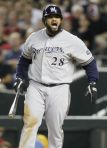 The beauty of WAR, however, is that it not only takes in account a player’s defensive skills (using UZR), but also the difficulty of the position. Therefore, someone like Dustin Pedroia at second base is significantly more valuable than a slugging Prince Fielder, at the first base position where power and production is demanded. Perhaps that is why Fielder is still fielding offers and has not landed a contract within his desired range. Not too shabby of statistic for a General Manager, huh? My hope is that this analysis paints the complexity of WAR and the many factors used to determine the number of wins that a player is ultimately worth to his team.
The beauty of WAR, however, is that it not only takes in account a player’s defensive skills (using UZR), but also the difficulty of the position. Therefore, someone like Dustin Pedroia at second base is significantly more valuable than a slugging Prince Fielder, at the first base position where power and production is demanded. Perhaps that is why Fielder is still fielding offers and has not landed a contract within his desired range. Not too shabby of statistic for a General Manager, huh? My hope is that this analysis paints the complexity of WAR and the many factors used to determine the number of wins that a player is ultimately worth to his team.
Let it be clear that by no means is WAR perfect. From a rather cynical standpoint, the very philosophy of WAR, which is calculated with so many components, professes that you cannot use one sole determinant to measure a player’s value. Furthermore, the positional adjustment numbers are the most arbitrary difficult to calculate. Can we really determine that a Center Fielder, due to difficulty to play the position itself, is worth 1.5 more wins than a first baseman? It is also difficult to determine the UZR for a first baseman, a position in which success is defined less by range and more by the ability to field throws. Paul Konerko certainly does not have great range, but he is universally regarded as one of the league’s top defensive first baseman, most likely saving Alexei Ramirez a handful of errors each season. Likewise, you cannot measure range for catchers, which use the fielding component of Stolen Base Runs Saved (rSB). We also know that much of catcher’s true value is related to his ability to call a smart game (which cannot be measured by any given statistic).
However, from a fantasy perspective, we do not care about defense, and therefore wRAA is a more accurate indicator of offensive output. FIP can be used as well. For example, if a pitcher’s FIP indicates that his defense is frequently letting him down, and said pitcher joins a top rated defensive team; you have acquired knowledge about a player’s ability not represented by the generic stats out there. This is how you will earn surplus value and land the “surprises”, the “bounce-back” players, and avoid the “busts”.
I admit, when I first familiarized myself with FanGraphs, I felt like I was cheating in my fantasy baseball leagues. However, after joining more competitive leagues and with sabermetrics entering the mainstream, I have learned that this only provides a slight advantage. Just as it holds true for every other aspect of life, it is impossible to predict the future in the world of baseball. However, in a game of numbers- only the slightest advantage is needed to set your team apart from the competition.
WAR is a one of a kind stat. It helps us more thoroughly examine a player’s worth, especially when compared to their salary. Ultimately, the stat serves as a good building block to work back from to understand the intricacies and essence of sabermetrics.
 ***Today’s feature was prepared by our Fantasy Baseball Analyst, Peter Stein. We highly encourage you to leave your comments and feedback at the bottom of the page and share in the discussion with our readers. You can also follow Peter on Twitter (@peterWstein).***
***Today’s feature was prepared by our Fantasy Baseball Analyst, Peter Stein. We highly encourage you to leave your comments and feedback at the bottom of the page and share in the discussion with our readers. You can also follow Peter on Twitter (@peterWstein).***
Please e-mail us at: MLBreports@gmail.com with any questions and feedback. You can follow us on Twitter and become a fan onFacebook . To subscribe to our website and have the daily Reports sent directly to your inbox , click here and follow the link at the top of our homepage.







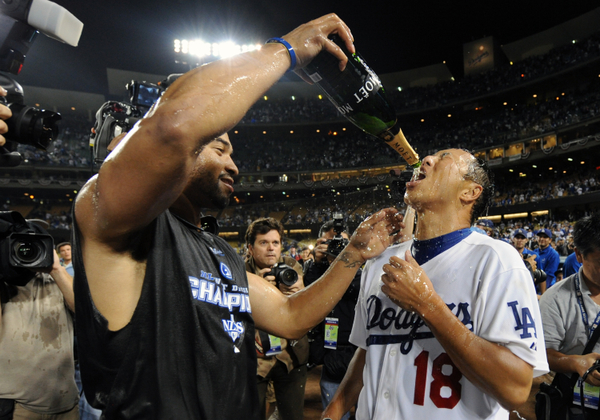
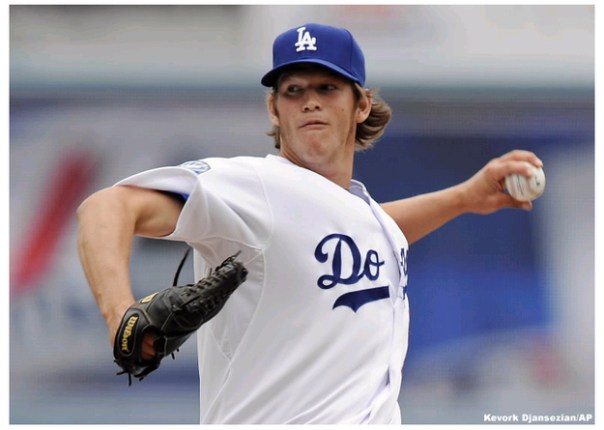

You must be logged in to post a comment.